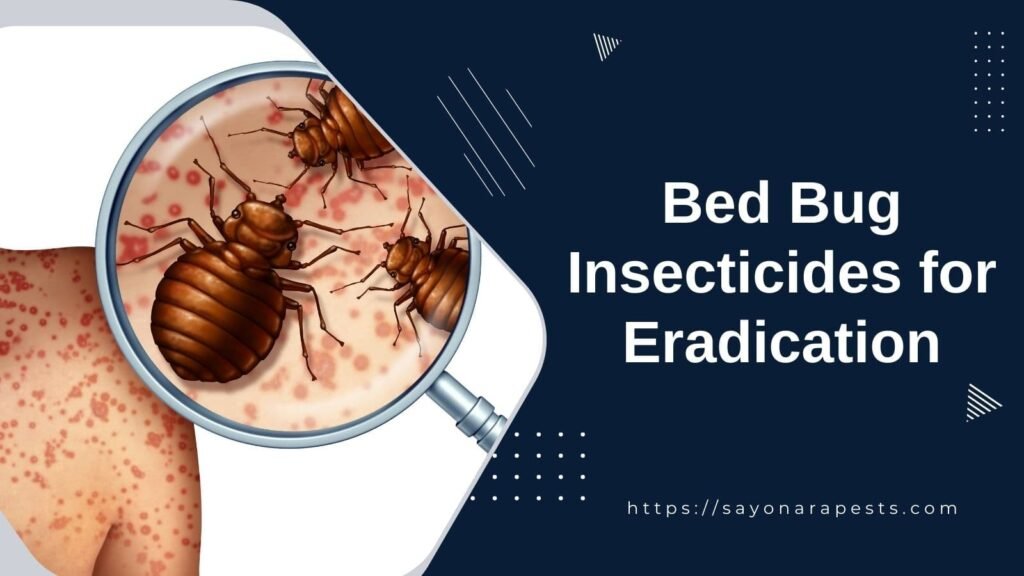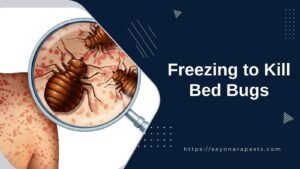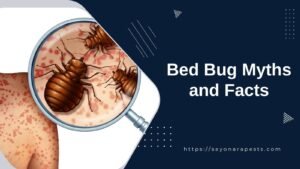Bed Bug Eradication Methods
Bed bugs are a common and persistent problem for many individuals. Eradicating these pests requires a comprehensive approach, often combining both chemical and non-chemical control methods. Proper preparation is essential to ensure the effectiveness of treatment strategies.
This section provides an overview of the initial steps and control methods for tackling bed bug infestations.
Preparation for Treatment
Before implementing any bed bug control measures, it’s critical to prepare the affected area. Effective treatment relies on thorough preparation, which includes:
- Decluttering the space to minimize bed bug hiding places.
- Laundering infested garments and bedding at high temperatures.
- Vacuuming the area to remove visible bed bugs and eggs.
- Encasing mattresses and box springs with protective covers.
- Isolating the bed to prevent bed bugs from climbing up.
- Sealing cracks and crevices to limit bed bug movement and harborage.
These steps not only aid in the eradication process but also assist in monitoring for any remaining bed bugs post-treatment.
Chemical Control Methods
Chemical treatments are a cornerstone in the battle against bed bugs. Various insecticides are available, each with specific advantages and considerations:
- Pyrethrins and Pyrethroids: These are widely used insecticides that can flush out bed bugs and kill them. However, some bed bug populations have developed resistance, reducing their effectiveness.
- Desiccants: By breaking down the waxy layer on bed bugs’ shells, desiccants effectively dehydrate and kill these pests. They offer a long-term solution since bed bugs cannot develop resistance to physical means of control like dehydration.
- Biochemical Pesticides: Neem oil, a natural pesticide, can be an effective biochemical option. It’s derived from the seeds of the Neem tree and can disrupt the life cycle of bed bugs.
When using chemical insecticides, it is important to follow label directions carefully and consider health and safety recommendations. For a deeper understanding of chemical control options, explore the section on best bed bug insecticides for eradication.
Non-Chemical Control Methods
In addition to chemicals, non-chemical methods can play a significant role in bed bug management:
- Heat Treatment: Exposing bed bugs to high temperatures can effectively eliminate them. This can be achieved through clothes dryers, portable heat chambers, or professional whole-house heat treatments (EPA).
- Cold Treatment: Freezing bed bugs can be an effective control method, but it requires maintaining a low enough temperature for a sustained period. Specialized equipment is often necessary, and thoroughness is key, as bed bugs can survive and later revive from cold treatments (EPA).
Non-chemical methods can be particularly advantageous as a part of an integrated pest management approach, reducing the reliance on chemical treatments and minimizing the risk of chemical resistance. For further details on non-chemical strategies, such as using steam to kill bed bugs or freezing to kill bed bugs, visit the dedicated sections on these topics.
By combining careful preparation, chemical insecticides, and non-chemical treatments, homeowners and pest control professionals can effectively combat bed bug infestations.
It’s essential to stay informed about the various methods available and to tailor treatments to the specific needs of the affected environment.
Chemical Control Options
When it comes to eradicating bed bugs, chemical control plays a vital role.
Chemical insecticides can be highly effective when used correctly and safely. In this section, we discuss the various chemical options available for homeowners, hoteliers, and renters looking to combat bed bug infestations.
Pyrethrins and Pyrethroids
Pyrethrins and pyrethroids stand as the most commonly used compounds for controlling bed bugs and other indoor pests.
Pyrethrins are botanical insecticides derived from chrysanthemum flowers, while pyrethroids are synthetic versions that mimic the effects of pyrethrins.
These compounds attack the nervous system of bed bugs, leading to their eventual demise.
While these insecticides are commonly used, bed bugs can develop resistance to them. Thus, it’s crucial to use pyrethrins and pyrethroids as part of a broader integrated pest management approach. This can involve combining chemical treatments with non-chemical control methods and regular monitoring.
| Insecticide Type | Source | Action on Bed Bugs |
|---|---|---|
| Pyrethrins | Chrysanthemum Flowers | Attack nervous system |
| Pyrethroids | Synthetic | Mimic effects of Pyrethrins |
Desiccants and Biochemical Pesticides
Desiccants are a unique type of insecticide that combat bed bugs by attacking their protective waxy layer. This action leads to dehydration and, ultimately, the bed bug’s death.
The physical mode of action of desiccants makes them invaluable in bed bug control as it is impossible for bed bugs to develop resistance to these substances.
Among the biochemical pesticides, cold pressed neem oil stands out as the only registered option for use against bed bugs. Extracted from the seeds of the Neem tree, neem oil contains various compounds with insecticidal properties, offering a more natural approach to bed bug eradication.
Using desiccants and biochemical pesticides can be a strategic choice, especially for those seeking options with a lower risk of resistance. Implementing these treatments as part of a comprehensive control plan can enhance their effectiveness.
| Insecticide Type | Method of Control | Resistance Development |
|---|---|---|
| Desiccants | Destroy protective coating | Unlikely |
| Biochemical Pesticides | Various natural compounds | Variable |
Neonicotinoids
Neonicotinoids represent a newer class of insecticides that act on the nicotinic receptors in the nervous system of bed bugs.
By causing the nerves to continuously fire until they fail, neonicotinoids can be particularly effective against bed bugs that have developed resistance to other pesticides.
The different mode of action of neonicotinoids makes them a critical tool in the fight against bed bug infestations. When other treatments have failed, neonicotinoids may offer a viable alternative to combat these persistent pests.
It’s essential, however, to use these products as directed and in conjunction with other bed bug eradication methods to achieve complete control.
| Insecticide Type | Mode of Action | Efficacy Against Resistant Bed Bugs |
|---|---|---|
| Neonicotinoids | Act on nicotinic receptors | High |
For more information on the effectiveness of neonicotinoids, refer to the EPA
By understanding and carefully selecting the appropriate chemical control options, those battling bed bug infestations can take decisive steps towards eradication.
With the right approach, including a mix of chemical treatments and preventive measures, complete bed bug control is within reach.
Non-Chemical Control Techniques
When it comes to managing a bed bug infestation, homeowners and property managers have a range of non-chemical options at their disposal.
These methods can be effective on their own or in combination with other treatments. Here, we’ll explore three non-chemical control techniques: heat treatment, cold treatment, and carbon dioxide methods.
Heat Treatment
Heat treatment is a powerful and eco-friendly way to combat bed bugs. This method involves raising the temperature of an affected area to a level that is lethal to bed bugs.
Professionals may employ specialized equipment to heat an entire room, or even a whole residence, to at least 118°F for 90 minutes, which has been shown to eradicate bed bugs at all life stages.
For smaller items, residents can use a clothes dryer on a high heat setting to kill bed bugs that may be lurking within fabrics.
| Method | Temperature (°F) | Duration |
|---|---|---|
| Whole Room Heat Treatment | 118+ | 90 minutes |
| Clothes Dryer | 120+ | 30 minutes |
For more information on heat treatments and how to safely apply them, visit our section on killing bed bugs with heat.
Cold Treatment
Cold treatment can be a viable option for exterminating bed bugs, particularly in small items that can be placed in a freezer. However, it’s crucial to know that not all freezers reach the necessary temperatures to be effective.
To successfully kill bed bugs, items must be kept at 0°F for a minimum of four days. Bed bugs can survive low temperatures by entering a dormant state, so the cold must be sustained to ensure complete eradication.
| Method | Temperature (°F) | Duration |
|---|---|---|
| Freezer Treatment | 0 or below | 4 days |
For further details on how to freeze bed bugs, please refer to our guide on freezing to kill bed bugs.
Carbon Dioxide Techniques
Carbon dioxide (CO2) techniques involve using the gas to suffocate bed bugs, as CO2 can be toxic to these pests in high concentrations.
This method is often used in conjunction with other control strategies and may require professional application. The effectiveness of carbon dioxide treatments can vary, and there are safety considerations to bear in mind since high levels of CO2 can be harmful to humans and pets.
As such, this method should be used with care and ideally by those who are trained to handle the equipment safely.
Given the complexity of CO2 treatments and the potential risks, it is recommended to consult with professional bed bug treatment options when considering this approach.
All of these non-chemical techniques offer valuable alternatives for those seeking to avoid pesticides in their battle against bed bugs. When combined with preventing bed bugs from spreading and continuous monitoring, these methods can be a part of a comprehensive approach to bed bug eradication.
DIY Bed Bug Control
Do-it-yourself bed bug control is a proactive approach for homeowners, renters, and hospitality providers looking to tackle bed bug issues without immediate professional intervention.
Understanding the effectiveness of various DIY methods is key to reducing and potentially eradicating bed bug populations.
Laundering and Interceptor Traps
One of the simplest and most effective DIY tactics involves laundering potentially infested fabrics. Bed bugs are vulnerable to high temperatures, and laundering items in hot water (around 113°F or 45°C) for at least 90 minutes can effectively kill them.
This method is especially useful for bedding, curtains, and clothing that can withstand high heat.
| Item | Temperature (°F) | Time |
|---|---|---|
| Bedding/Clothing | 113 | 90 min |
| Bedding/Clothing | 118 | 20 min |
Equally important are bed bug interceptor traps. These devices can be placed under the legs of furniture to capture bed bugs attempting to climb up or down.
They serve as both a control measure and a monitoring tool to assess the presence of bed bugs. Interceptors can be purchased or made using common household items.
For more information on how to create and use interceptor traps, consider visiting diy bed bug control methods.
Retreatment Considerations
When engaging in DIY bed bug control, it’s crucial to remain vigilant. If there’s evidence of an ongoing infestation after initial treatment—such as spotting bed bugs or finding new bites—retreatment may be necessary.
This could involve repeating laundering and trapping processes, or considering other forms of control like using steam to kill bed bugs or using diatomaceous earth to kill bed bugs.
It’s also essential to vary the types of control methods to combat potential insecticide resistance. Consulting with professional bed bug treatment options can provide insight into additional methods or confirm if professional services might be needed for complete eradication.
Monitoring and Prevention
Continuous monitoring for bed bugs is critical, even after active infestations seem to have been resolved. Regular inspections of sleeping areas, furniture, and potential hiding spots will help catch any resurgence early.
Preventative measures, such as using protective mattress covers and reducing clutter, can also help to deter bed bugs from establishing themselves in your space.
For travelers, ensuring you prevent bed bugs when traveling by inspecting accommodations and managing luggage can be instrumental in avoiding bringing bed bugs home. Always be sure to check for bed bugs in hotel rooms before settling in.
Preventing the spread of bed bugs requires a combination of vigilance, proactive measures, and effective treatment methods.
Whether you opt for DIY strategies or professional assistance, consistent efforts and informed decisions will be your best defense against these persistent pests.
For a broader understanding of control methods, explore our comprehensive guide on ways to kill bed bugs.
Challenges in Bed Bug Eradication
Bed bug infestations are a growing concern for homeowners, hoteliers, and renters alike.
The process of eradicating these pests can be complex, and there are several challenges that one may encounter along the way, including insecticide resistance, deciding between professional and DIY approaches, and finding effective insecticide treatments.
Insecticide Resistance
One of the most significant hurdles in bed bug control is their increasing resistance to insecticides. Bed bugs have developed strong defenses against commonly used chemicals, such as pyrethroid insecticides, which are traditionally employed for indoor pest control.
These adaptations include behavioral changes and physiological resistance, rendering many available treatments ineffective. Medical News Today highlights the difficulties of controlling bed bug infestations due to this growing resistance.
| Insecticide Type | Resistance Level |
|---|---|
| Pyrethroid | High |
| Carbamate | Moderate |
| Organophosphate | Low |
Professional vs. DIY Approach
When it comes to eradicating bed bugs, individuals are often torn between hiring professionals or attempting a DIY approach.
While there are numerous DIY bed bug control methods available, the Alaska Department of Environmental Conservation advises against using chemicals without special training. Improper application can lead to ineffective results and may exacerbate the problem by causing bed bugs to spread to adjacent areas.
Professionals, on the other hand, are equipped with specialized training, tools, and access to more potent insecticides.
Working with certified pest control experts can increase the likelihood of a successful eradication, as they are knowledgeable about the most effective insecticide treatments and can tailor their approach to the specific circumstances of the infestation.
Effective Insecticide Treatments
Identifying effective insecticide treatments for bed bug eradication is crucial in the battle against these pests.
Most insecticides available to the public are not potent enough to achieve complete extermination. In addition, bed bugs often hide in crevices and can avoid areas treated with insecticides, or they may simply relocate to untreated areas, such as adjacent rooms or apartments.
It is essential to utilize a combination of methods for eradication, including both chemical and non-chemical control techniques.
Effective treatments involve a multi-faceted strategy that may include heat treatment, cold treatment, and the use of desiccants or biochemical pesticides in conjunction with insecticides.
Ultimately, due to the complexity and challenges associated with bed bug eradication, seeking the assistance of professionals is often the most reliable option.
They can provide a comprehensive plan that includes initial treatment, follow-up visits, and ongoing monitoring to ensure that the infestation is fully addressed.
For those traveling or concerned about bed bug exposure, it’s also beneficial to learn about preventing bed bugs when traveling and how to check for bed bugs in hotel rooms.
Additional Strategies for Eradication
When facing a bed bug infestation, homeowners, hoteliers, and rental property managers seek comprehensive approaches for elimination.
Alongside the primary treatment plans, additional strategies can bolster the fight against these persistent pests. Let’s explore some supplementary measures that can be integrated into your eradication efforts.
Silica Dust and Diatomaceous Earth
Silica dust and diatomaceous earth (DE) are two substances known for their desiccant properties, which means they can effectively dehydrate bed bugs leading to their demise.
Using these substances on a mattress cover, especially after wiping away bed bugs, shells, and debris, can prevent any remaining bugs from surviving.
Quora recommends this method for its efficacy as a non-toxic solution. DE, in particular, is a popular option due to its natural composition and safety for humans and pets when used correctly.
| Substance | Effectiveness | Non-toxic | Application |
|---|---|---|---|
| Silica Dust | High | Yes | Apply to mattress covers and surrounding areas |
| Diatomaceous Earth | High | Yes | Apply to mattress covers and surrounding areas |
For more information on how to utilize diatomaceous earth in your fight against bed bugs, refer to our guide on using diatomaceous earth to kill bed bugs.
Residual Insecticides and Treatment Visits
In the fight against bed bugs, a multi-pronged chemical approach can be highly effective.
University of Minnesota Extension suggests that an effective insecticide treatment for bed bugs may require three types of chemicals:
- Residual chemicals with a specific duration of effectiveness.
- Immediate acting chemicals that come into direct contact with bed bugs.
- Dust applied to the hiding areas of bed bugs, away from human activity.
This comprehensive chemical strategy often requires multiple treatment visits by a licensed Pest Management Professional (PMP) for complete eradication.
The initial treatment tackles the visible infestation, while follow-up visits ensure that any newly hatched bed bugs or those missed during the initial treatment are also eliminated.
For a deeper understanding of professional bed bug treatments, explore our article on professional bed bug treatment options.
Complementary Control Services
Beyond chemical treatments, integrating complementary control services can enhance the overall effectiveness of your eradication strategy.
These services may include professional heat treatments, where infested rooms are heated to temperatures lethal to bed bugs. Additionally, using steam can be an effective method to reach cracks and crevices where bed bugs hide.
Other complementary services might include:
- Freezing to kill bed bugs
- Vacuuming to eliminate bed bugs
- Natural remedies for killing bed bugs
Combining these methods with chemical treatments creates a robust plan of attack against bed bugs. It’s important to consider the specific nature of the infestation and to select services that align with the severity and location of the bed bug presence.
For a comprehensive list of effective bed bug extermination methods, visit our section on effective bed bug extermination methods. Always remember, the key to success is a multi-faceted approach tailored to your unique situation, ensuring that no bug is left behind.



